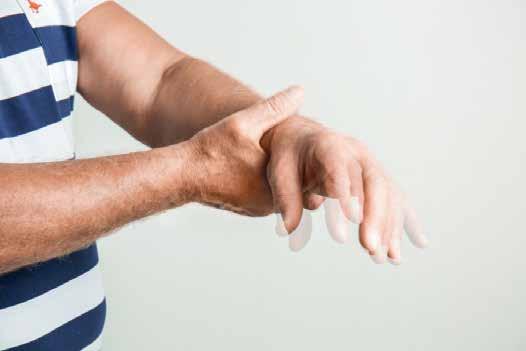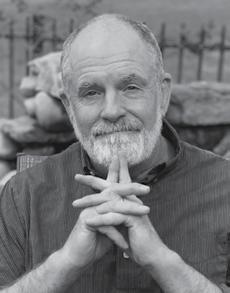Inside This Issue




 By Adrienne E. Frazior, J.D.
Sidra S. Galvin, J.D. Polsinelli, PC
By Adrienne E. Frazior, J.D.
Sidra S. Galvin, J.D. Polsinelli, PC
ROncology Research pg.3
Mental Health pg.5
Healthy Heart pg.6
Hospital News pg.8

ecent legal developments in Alabama demonstrate that fertility care stakeholders should prepare for additional state regulation of in vitro fertilization (“IVF”) and other assisted reproductive technology (“ART”) services in states that have sought to restrict abortion access following the U.S. Supreme Court’s 2022 decision to overturn Roe v. Wade in Dobbs v. Jackson Women’s Health Organization (“Dobbs”).
The Alabama Supreme Court has long interpreted the state’s Wrongful Death of a Minor Act (the “Act”) to recognize the personhood of “unborn children.” In LePage v. Center for Reproductive Medicine, P.C. (“LePage”), a case involving a wrongful death action brought under the Act against a fertility clinic that inadvertently destroyed cryopreserved human embryos, the Alabama Supreme Court expanded the Act’s definition of “unborn children,” effectively providing that cryopreserved embryos are also persons and therefore covered under the Act. LePage has severely disrupted access to fertility care services in Alabama, where several health care providers have paused IVF and related services until further state guidance is issued. In fact, there is at least one pending lawsuit brought under the Act against a mobile fertility clinic.
LePage indicates that several states may be inclined to increase regulatory scrutiny of ART services

in the months and years ahead. ART regulation will likely be left to the states, rather than the U.S. Congress or U.S. Supreme Court, for two reasons:
(1) decisions such as LePage reflect a state supreme court’s final decision on a state police power, which the 10th Amendment to the U.S. Constitution protects as a sovereign state activity; and
(2) any proposed federal legislation that would encumber ART access in a manner similar to LePage is not likely to become law, because both presumptive presidential nominees in 2024 have stated their disagreement with the LePage opinion, and therefore either would be inclined to veto a proposed federal law to grant personhood to cryopreserved embryos. Nevertheless, fertility care stakeholders should pay close attention to pending state legislation and court decisions that could impact ART access.
The outcome of state law activity regarding ART regulation, particularly the personhood status of cryopreserved embryos, remains uncertain. Indeed, there appears to be a general divide among even conservative lawmakers and jurists on the question of whether cryopreserved embryos are persons for the purposes of state law.
For example, Alabama Supreme
Court Justice Mendheim concurred with the result in LePage but urged the state legislature to clarify the definition of “unborn child” under the Act, citing that the Act, which first became law in 1872, was enacted before “IVF was even a possibility.”
Further, although Alabama statutes and court precedents contain some of the narrowest legal exceptions for abortion services among the 50 states, Alabama state legislators have already amended state law with an eye toward preserving ART access. Shortly after the LePage decision, Alabama enacted SB 159, a bill to provide individuals and entities with civil and criminal immunity for the death of or damage to an embryo. However, while SB 159 arguably shields health care providers from civil and criminal prosecution, it does not regulate whether life begins at conception, nor does it grant civil immunity to “manufacturer[s] of goods used to facilitate the IVF process or the transport of stored embryos.”
Like Alabama, other states that have restricted abortion access are primed to more closely regulate ART services. States to watch include Idaho and Texas, two of the most abortion-

 WhenBy Hope Engelbrecht, M.D., Texas Oncology–Cedar Park, Round Rock North
WhenBy Hope Engelbrecht, M.D., Texas Oncology–Cedar Park, Round Rock North
a patient reaches the end of cancer treatment and hears their physician say, “There is no evidence of disease,” it is a moment of celebration. But for some, being cancer-free is only temporary, and it may be a shock to learn your cancer has returned.
Cancer recurrence — the return of cancer after a period of remission — is a possibility for any cancer survivor. Whether it reappears in the same location or spreads to other parts of the body, navigating the challenges of recurrent cancer requires resilience, support, and informed decision-making with one’s medical team and loved ones.
Understanding
According to the American
Cancer Society, almost 1 in 2 men and 1 in 3 women in the U.S. are expected to face cancer in their lifetimes. Of the 18.1 million cancer survivors in the U.S. as of January 2022, some of these will face cancer more than once.
While the recurrence rates for specific cancer types are hard to measure long-term, what is known is that the likelihood of recurrence depends on the type and stage of cancer.
Cancer can recur in the same spot, in nearby tissues or lymph nodes, or it can appear in a completely different part of the body. Recurrence may happen due to:
• Some cancer cells being left behind during initial treatment, or having spread to other parts of the body before initial treatment
• The development of treatmentresistant cancer cells over time
• Certain tumor characteristics, such as the ability to lie dormant for long periods
• Using tobacco products, obesity,

lack of exercise, and excess alcohol consumption can correlate with increased recurrence risk
Coping
The recurrence of cancer can evoke a wide range of emotions. A study to understand how cancer affects self-perception, body image, and mental and emotional health found that 70% of survey respondents experienced one or more symptoms of depression and 65% experienced anxiety. Proactively addressing symptoms of depression or anxiety can help people cope more effectively with the emotional impact of cancer recurrence. However, the same study showed
that only one-third of respondents sought out resources to help cope with physical and mental side effects of cancer treatment and only 25% sought resources for just mental side effects.
In addition to resources your care team may have available, self-care plays an important role in physical and mental health. Maintaining healthy habits can support both physical and emotional resilience, empowering patients to actively participate in their care journey. These may include:
• Consuming nutritious foods
• Engaging in exercise or physical





Air pollution in Austin neighborhoods is linked to an increased rate of asthma-related trips to the emergency room (ER), especially in areas with a high proportion of Black and Latinx residents, according to a new study by researchers at Dell Medical School at The University of Texas at Austin. The study, published in the American Journal of Respiratory and Critical Care Medicine, investigates how small differences in air pollution levels among neighborhoods in the five-county Austin metro area impact the frequency of asthma-related emergency care.
These findings come just weeks after the Environmental Protection Agency announced new, stricter limits
on air quality standards in the U.S. The updated standards mean Austin now has higher-than-acceptable levels of fine particulate matter — tiny particles that can be inhaled into the lungs and cause breathing problems.
It’s well established that a day of bad air quality carries a risk of worsening asthma symptoms. This study breaks new ground by examining whether higher long-term trends in air pollution in some Austin neighborhoods set those areas apart from less polluted neighborhoods in the rate of asthma-related ER visits among those living there. This particularly affects Black and Latinx people, as neighborhoods with higher air pollution also tend to have a greater share of residents of color. Researchers found that despite relatively low air

pollution levels within the Austin metro area, there was a significant linkage between ER visits triggered by asthma symptoms and higher pollution areas.
“We are exploring the connections between the neighborhood environment and lung health so that people can understand the risks they face when they live in places with consistently poor air quality,” said Sarah Chambliss, lead author of the study and a research associate in the Department of Population Health at Dell Med. “But beyond understanding personal risks, this is also a critical piece to the puzzle
of why Black and Latinx Austinites suffer a greater burden of asthma. We know the placement of highways and industry in East Austin contributes to greater local air pollution, and this research points to the consequences that may have for racial and ethnic health disparities.”
Key findings from the study:
• Association Between Air Pollution & Asthma-Related ER Visits: Researchers found significant associations between census
see Air Pollution ...page 14

 By Michael Jones Ph.D
By Michael Jones Ph.D
The 3Rs of Recognition, Remorse, and Repair offer a valuable framework for navigating the aftermath of being hurt. We discussed before about the importance of forgiveness for your own sake. But how to decide about being vulnerable again when someone hurts you? Forgiveness is not enough. Consider the 3Rs: recognition, remorse, and repair. This approach underlines the importance of acknowledging harm, expressing genuine regret, and taking actionable steps towards making amends.
• Recognition: The first step involves acknowledging the hurt caused, an essential part of healing and moving forward. It requires
the person who caused the harm to fully understand the impact of their actions on the other. This isn’t just about admitting a mistake; it’s about deeply understanding how the actions have affected someone else, showing empathy and awareness. It’s like saying, “I see the pain I’ve caused, and I understand it.”
• Remorse: Genuine remorse goes beyond a simple apology. It’s about expressing sincere regret for the harm done, not just for the consequences one faces as a result of their actions. This step is crucial for the person hurt to feel that their pain is recognized and validated. It’s an emotional expression that says, “I truly regret the pain I’ve caused you.”
• Repair: This final step is about taking action to make amends and address the damage caused. Repair can take many forms, depending on the situation and the needs of the person hurt. It might

involve a direct action to rectify the situation, a commitment to change behavior, or other efforts to restore trust and rebuild the relationship. It’s a commitment to action, demonstrating, “I am willing to make things right.”
If you don’t get 3 out of 3 it is unwise to be emotionally vulnerable. The person is likely to hurt you again. So, practice forgiveness but pay attention to the 3Rs. Now, have a great rest of the day.


We’re all ready to feel good again, but for our food insecure neighbors there’s no vaccine to fight hunger.
The 1 in 5 Central Texas children at risk of hunger deserve a shot at a happy summer.
As blood centers and hospitals face critically low levels of blood supplies, many people with heart disease may wonder if they can help by donating.
For the most part, they can do so safely, experts say.
Typically, someone in the U.S. needs blood about every two seconds for reasons that may include surgery, cancer treatments, childbirth, anemia, serious injury or blood disorders.
In fact, a surprising number of potential blood donors are those with a history of medical conditions,
blood recipients, and donation requirements may vary at blood centers.
Blood centers screen all potential donors with a questionnaire to determine which people can safely give blood, Flowers said.
According to the National Institutes of Health, people with a cold or the flu can’t donate blood until they have been symptom-free for 48 hours, with different limitations for COVID-19 and other conditions.
However, people who have heart disease can be considered for blood donation, Flowers said.
In addition, most people with

including heart disease, who remain steadfast in their desire to give blood, said Dr. Alcinda Flowers, medical director of Versiti, a Milwaukee-based blood center.
“They’re often the ones that want to donate because they’ve been in the hospital and they’ve been affected themselves by the need for blood,” she said. “And they can empathize with others.”
Every year, more than 11 million units of whole blood are donated in the U.S., according to the Food and Drug Administration. However, only about 3% of eligible individuals donate blood, says the American Red Cross, which in January reported an emergency blood supply shortage after reaching a 20-year low in the number of donors. Winter storms and a surge in COVID-19 cases likely further disrupted supplies.
The FDA regulates the safety of blood products primarily to protect
high blood pressure, or hypertension, can donate blood and do so if their systolic blood pressure (top number) is below 180 millimeters of mercury and diastolic (bottom number) is 100 mmHg at the time of donation.
The Red Cross recommends a six-month wait or longer for those who have had a heart attack, a recent episode of angina, bypass surgery or angioplasty, or if a change in their heart condition resulted in a medication change.
People who use blood thinners or other anti-clotting or antiplatelet medications must disclose all their medications during their health screenings because donating blood may be harmful to them, as well as the recipients, Flowers said.
Bottom line: It’s a good idea for those with heart conditions to check with their health care team before donating blood, Flowers said.

Oncology, one of the largest community-based oncology practices in the U.S., announced today its participation in a global clinical trial evaluating a treatment for resected high-risk melanoma patients. The Phase 3, randomized V940-001 clinical trial will evaluate Merck and Moderna’s V940 (mRNA-4157), an investigational individualized neoantigen therapy (INT), in combination with KEYTRUDA, Merck’s anti-PD-1 cancer therapy, as a treatment following surgery in patients with resected high-risk (Stage IIB-IV) melanoma. The study will evaluate the safety and efficacy of the INT in combination with KEYTRUDA in this population – as compared to KEYTRUDA alone.
This trial is currently available at two Texas Oncology locations: Texas Oncology-Austin Central, at 6204 Balcones Dr.; and Texas Oncology-Baylor Charles A. Sammons Cancer Center, 3410 Fort Worth St., Suite 400 in Dallas.
“This unique study will examine the potential of a personalized therapy to help patients with melanoma who have been previously treated with surgery,” said Jeff Yorio, M.D., medical oncologist and hematologist, Texas Oncology, and investigator for the clinical trial.
INTs are designed to train and activate the immune system so that a patient can generate an antitumor response specific to their tumor mutation signature. V940 (mRNA-4157) is aimed at stimulating
an immune response by generating specific T-cell responses based on the unique mutational signature of a patient’s tumor. KEYTRUDA is an immunotherapy that works by increasing the ability of the body’s immune system to help detect and fight tumor cells. Based on early clinical studies and data from the Phase 2b KEYNOTE-942/mRNA-4157-P201 trial, combining V940 (mRNA-4157) with KEYTRUDA may provide an additive benefit over KEYTRUDA alone. “In the phase 2 trial, the addition of this personalized mRNA therapy was shown to decrease the risk of recurrence or death related to melanoma by approximately 44% when added to pembrolizumab compared to pembrolizumab alone.** This level of improvement in this early trial has encouraged our interest in the presently open phase 3 study which hopes to expand on this knowledge”, said C. Lance Cowey, MD, medical oncologist with Texas Oncology Dallas and investigator on both the phase 2b and phase 3 studies.
The trial is slated to enroll approximately 1,089 patients at more than 165 sites and in more than 25
On April 18 and 19, 2024, the Texas Cardiac Arrhythmia Institute (TCAI) at St. David’s Medical Center will host its seventh international symposium on complex arrhythmias, EPLive 2024.
EPLive is an intensive, two-day educational meeting for physicians, advanced practice registered nurses and allied health professionals who have an interest in treating complex cardiac arrhythmias, a condition in which the heart beats with an irregular or abnormal rhythm. Live cases, which are broadcast with expert commentary from the
state-of-the-art Electrophysiology
Center at St. David’s Medical Center, will serve as the primary teaching tool.
“The Texas Cardiac Arrythmia Institute is honored to bring together the world’s leading cardiac electrophysiology experts to present live and recorded cases that showcase the accomplishments and the future of our field,” Andrea Natale, M.D., F.H.R.S., F.A.C.C., F.E.S.C., cardiac electrophysiologist and executive medical director of TCAI and EPLive course director, said. “The cases, which highlight advances in the treatment of cardiac arrythmias, will help
further improve patient outcomes across the globe.”
Cardiac arrhythmias are caused by problems with the heart’s electrical system. While many cardiac arrhythmias are treated using modern ablation procedures— which rely on extreme heat or cold to destroy targeted areas associated with abnormal heart rhythms—EPLive will focus on Pulsed Field Ablation (PFA). This form of ablation, the latest advancement in electrophysiology, produces high-frequency electrical pulses to attack muscle cells that cause irregular heart rhythms without using excess heat or cold.

countries around the world. The primary endpoint of the study is recurrence-free survival (RFS), and secondary endpoints include distant metastasis-free survival (DMFS), overall survival (OS), and safety.
Texas Oncology’s research and clinical trials program provides innovations in cancer treatment to patients in the communities where they live, without costly and
see Melanoma...page
The non-thermal approach does not damage surrounding tissue and, therefore, enhances patient outcomes.
Atrial fibrillation (A Fib) cases, including PFA, represent one of the four sections of the conference. EPLive will also feature Ventricular Tachycardia (VT) ablation cases, Left Atrial Appendage (LAA) closure cases and devices, and new technology. The sessions consist of a combination of live and recorded cases from TCAI and some of the world’s premier centers: Cleveland Clinic, Houston Methodist, Kansas City Heart Rhythm Institute, Massachusetts General, MedStar Health (Washington, D.C.), Mt. Sinai Hospital (New York), Mozina Heart Center (Italy), St. Bernard’s Heart and Vascular Center (Arkansas), UC Health Center (Colorado), University of Chicago Medicine, University
Today’s “match” marks the transition from medical student to resident physician for the 168 incoming physicians in training who will join Austin’s health care workforce and the 48 Dell Med students soon to embark on their residencies across the country.
By Dell Medical SchoolThis morning, thousands of fourth-year medical students across the country opened envelopes to discover their “matches” — the residency programs within hospitals and medical schools where they will spend the next segment of their medical training. Among these students are one of the largest classes of trainees to ever match to Dell Med, along with 100% of Dell Med’s Class of 2024.
“Match Day marks the fruition of dreams and dedication,” says Dean Claudia Lucchinetti, M.D. “It is especially remarkable this year as we celebrate our students who started their
medical school journey during the COVID-19 pandemic, at a time when we were all reminded of how important physicians are to our communities. Today, they are one step further in that journey.
“We welcome our incoming residents and fellows and congratulate our medical students who have matched to prestigious programs. Their achievements embody our commitment to excellence in health care, and we eagerly look forward to the impact they will have on the future of medicine.”
Welcoming the Newest Class of Trainees
In total, 168 incoming physicians will continue their training in residency

and fellowship programs sponsored in partnership by Dell Med and Ascension Seton, including 13 graduating Dell Med students who matched to Dell Med residencies. These trainees will join existing residents and fellows in providing essential health care services to patients in and around Austin.
“I am deeply thankful for our continued partnership with Dell Medical School to provide graduate medical education that results in the
compassionate and comprehensive care of Austin’s most vulnerable patients,” says Andy Davis, president and CEO of Ascension Texas.
The Impact of Graduate Medical Education in Austin
Beginning July 2024, Dell Med and Ascension Seton will be home to 465 resident and fellow physicians, educating trainees in programs ranging
see Match Day...page 13


Aperson is never too old to build muscle. In fact, as we get older, it becomes even more important to build muscle, not only for our physique but for our overall health. Dr. Adil Ahmed, assistant professor in the Joseph Barnhart Department of Orthopedic Surgery, shares the health benefits of building muscle at an older age and how to do so safely.
“The protective effect of muscle and muscle mass has been well studied – everything from the musculoskeletal system to orthopedics and even brain health. Building muscle in your body has been well shown to delay dementia and the effects of dementia and preserve cognitive function,” Ahmed said. “It’s just very good overall for one’s health, specifically from the orthopedic perspective.”
Ahmed adds that the only thing shown to maintain bone density into older age and prevent or delay osteoporosis is muscle. “It’s a very good protective long-term process,” he said.
As we age, our muscles can decrease in size and lose strength. It can be challenging to build muscle later in life, especially if you have never done it before, but Ahmed says that the safest way to do it is with guidance and supervision, whether that be a friend or family member who is well-versed in the gym or a personal trainer.
He recommends starting with controlled resistance training and then working up to free weights and focusing on good form and good technique.

“In my opinion, free weights are the best for muscle building because of the force you exert with your muscles. There’s also a balance component that stabilizes the muscles and works your core,” he said.
Ahmed explains that lifting weights to build muscle is good, even for older people with chronic health conditions like heart disease. It is an exertion-heavy activity that forces your heart to pump hard. It is best to get evaluated by your doctor before getting into a rigorous heavy-lifting program, he said.
“When you lift weights, you
need the heart to pump hard to allow blood flow to travel to the muscles because that’s the only way nutrients get there, and it’s the only way muscles stay active and can exert before fatigue. It’s cardioprotective in the sense that your heart gets conditioned to pump harder,” he said.
By Emily Dressen Texas Health and Human Services’ Foster Grandparent ProgramNational April is recognized as National Volunteer Month and is dedicated to honoring all volunteers across the nation. From bagging items at a food pantry to spending a Saturday cleaning up a public park, volunteers make a difference in their communities,
and we thank them for giving back.
The word volunteer is defined as someone who freely takes part in an enterprise or handles a task. With such a broad definition, the term applies to the thousands of ways people give back every day. A great example of this is the Texas Health and Human Services Commission Foster Grandparent Program.
Through the Foster Grandparent
Program, income-eligible Texans ages 55 and older mentor children and youth at elementary schools, Head Start programs, child care centers and juvenile justice facilities, along with boys and girls clubs, libraries and summer camps. Their commitment to the program and the children and youth they serve is unwavering, and their impact can last a lifetime, spanning generations.
One of the Foster Grandparent Program volunteers recently hit a major milestone. On Feb. 16, Willie Piper of Austin celebrated her 30th anniversary as a volunteer with the program. Affectionately called “Grandma,” Piper spent much of her time mentoring youth at the Travis County Juvenile Detention Center. Over the past
see Age Well, Live Well...page 12


Continued from page 8
disruptive travel. More than 2,500 Texas Oncology patients are enrolled in the more than 150 currently open clinical trials at 53 locations across the state. Participation in clinical trials provides patients access to breakthroughs in cancer care, while also helping advance the development of new discoveries in diagnosis, prevention, and treatment through
Continued from page 8
of Pennsylvania, University of Texas Southwestern Medical Center and Vancouver General Hospital (Canada). The conference will also focus on a variety of objectives, including:
• Identifying processes to reduce complications and promote safety measures for patients during A Fib ablation and other cardiac arrhythmias.
• Demonstrating understanding of the latest evidence and guidelines in arrhythmia management and treatment with new technology.
• Applying approaches that best
Continued from page 10
from family medicine and neurology to pediatric emergency medicine and cardiovascular disease. A new addition to Dell Med’s GME programs, the Pediatric and Adolescent Gynecology Fellowship, will start its first class of fellows, expanding access to care in
new drugs, combination therapies, and radiation therapy.
“This new trial is an example of our commitment to leadership in cancer research, with one of the largest community-based clinical trials programs in the U.S.,” said Scott Paulson, M.D., medical oncologist, medical director of research, Texas Oncology. “Our physicians, research
nurses, and support staff comprise a dedicated team of cancer investigators, on the hunt for new solutions that will benefit our patients and transform the future of cancer care.”
Paulson is leading an expansion of Texas Oncology’s research program to make more trials available in more Texas communities. The program includes ongoing collaboration with
the US Oncology Network and Sarah Cannon Research Institute.
KEYTRUDA® is a registered trademark of Merck Sharp & Dohme LLC, a subsidiary of Merck & Co., Inc., Rahway, NJ, USA.
utilize the new technologies demonstrated to optimize clinical outcomes.
• Identifying processes that can benefit from the integration of new technologies and promote safer procedures for the patient.
• Identifying processes to reduce complications and promote safety measures for the patient during complex cardiac device implants lead extractions.
Along with Dr. Natale, EPLive will feature presentations by several TCAI physicians, including course
co-director, Amin Al-Ahmad, M.D., Mohamed Bassiouny, M.D., David Burkland, M.D., Robert Canby, M.D., Joseph Gallinghouse, M.D., Rodney Horton, M.D., Patrick Hranitzky, M.D., and Jason Zagrodzky, M.D.
Physicians will receive a maximum of 14.5 American Medical Association (AMA) Physician’s Recognition Award (PRA) Category 1 Credit™ hours at the conference.
The Texas Cardiac Arrhythmia Institute features the leading robotic electrophysiology center in North America. The 72,000-square-foot
center, which opened in 2019, includes six electrophysiology labs equipped with advanced technology for treatment of complex arrhythmias. The institute’s team of world-renowned physicians is one of the largest electrophysiology practices in the United States, providing unparalleled experience, expertise and exceptional care.
For more information, visit EP-Live.com.
this specialty within Austin.
This new cohort of trainees will join current residents and fellows who, in the last academic year, provided more than 575,000 hours of care to patients — many of whom are part of historically underserved communities
Continued from page 11
30 years, she has served upwards of 50,000 hours and is estimated to have mentored as many as 20,000 youth.
Piper has hundreds of stories to share about the connections she’s made, but all of them have one common theme: empowerment. Piper
— at more than 60 hospitals and clinics across Austin and Central Texas.
This new class of residents and fellows joins our current trainees in the crucial role they play within Austin’s health care landscape. They will provide care to some of our most
shows love, kindness and empathy to each youth she works with. She is in their corner when no one else is there, offering words of encouragement and giving them hope. The impact of Piper’s service is immeasurable, and she has been an inspiration for so many people.
Throughout National Volunteer Month and every month after, we challenge you to serve your community, finding motivation from Piper and other Foster Grandparent Program volunteers.
vulnerable patient populations, aid in the education of our medical students and tackle systemic challenges in health.
Interested in becoming a Foster Grandparent volunteer? Visit the Foster Grandparent Program page for more information.
Continued from page 1
restrictive states in the country. These states have introduced legislation that would increase regulatory scrutiny of ART, although not necessarily prohibit the practice of ART altogether. For example, Idaho House Bill 400 (2024) would “redesignate” the term “embryo” to “preborn child,” but qualify in its criminal statutes that a preborn child is “in utero.” Further, in its most recent legislative session, Texas lawmakers
Continued from page 3
activity within one’s abilities
• Incorporating stress management techniques
• Adding integrative therapies such as meditation or massage
Moving Forward
When facing cancer recurrence, weigh treatment options carefully and make informed decisions on the next step of your journey.
Considerations such as the type and location of the cancer, overall health status, treatment tolerance, and even personal preferences play a central part in the decision-making
Continued from page 4
tract-level rates of asthma-related ER visits and average concentrations of multiple types of air pollution (fine particulate matter, coarse particulate matter, and sulfur dioxide) that come from a mix of urban sources, including diesel exhaust, road dust, manufacturing and landfills. These local sources are connected to more ER visits for asthma.
• Disparities in Exposure to Air Pollution: Neighborhoods with higher levels of air pollution tend to have a higher proportion of Black or Latinx residents, and those groups were found to be exposed to higher concentrations of air pollutants than white residents were, indicating environmental inequities in urban areas.
introduced legislation that would amend existing law that criminalizes an act against “an unborn child at every stage of gestation from fertilization until birth.” In particular, the bill would change the word “gestation” to “development.” If the bill had been enacted, this shift would have arguably provided a basis to criminally prosecute an act that harms a cryopreserved embryo, because “gestation” could be
read to apply to only those embryos in utero, whereas “development” could be interpreted to mean any embryo that exists, whether it is implanted in a uterus or not.
The bottom line of the LePage decision and analogous statutory law in various states is this: In the post-Dobbs era, some state lawmakers intend to more closely regulate the fertility care industry.

process. That is why an open dialogue with the healthcare team is essential to understand treatment goals, potential benefits, side effects, and overall outcomes.
Navigating cancer recurrence also requires a strong support network and access to reliable resources. Support groups, counseling services, and online communities offer opportunities for connection, empathy, and shared experiences with others who are going through a similar scenario.
While the prospect of cancer recurrence may evoke feelings of fear,
anger, or uncertainty, it’s also good to remember that feelings of hope and resilience can coexist. By understanding the nature of recurrence, addressing the emotional and practical concerns to cope with the diagnosis, and actively engaging in treatment decisions, one can navigate the journey of cancer recurrence with support, strength, and perseverance.

• Connecting Air Pollution With Health Disparities: Adding air pollution to statistical models reduces race- and ethnicity-related asthma disparities by up to 32%, indicating that pollution exposure may account for the higher number of asthma-related ER visits, especially in neighborhoods with a greater percentage of residents of color.
“These findings underscore the urgent need for targeted interventions to mitigate pollution in neighborhoods with higher asthma burdens, especially where Black and Latinx people live,” said Elizabeth Matsui, M.D., co-author of the study, a professor of population health and pediatrics, and director of the Center for Health & Environment: Education & Research at Dell Med.
“By understanding the role of specific urban pollution sources, we can better address the underlying environmental injustices contributing to asthma disparities.”
The study’s insights pave the way for more informed public health decision-making and underscore the importance of addressing environmental disparities to promote health equity within urban communities.



Come grow with us as our faculty and staff expands.
Located near The Woodlands, Texas, ranked #3 among the “Best Cities to Live in America”
Received an A+ for schools, family friendliness, and jobs
Sam Houston State University is an Equal Employment Opportunity/Affirmative Action Employer and Smoke/Drug-Free Workplace. All qualified applicants will receive consideration for employment without regard to race, creed, ancestry, marital status, citizenship, color, religion, sex, national origin, age, veteran status, disability status, sexual orientation, pregnancy, or gender identity or expression. Sam Houston State University is an “at will” employer. Employees with a contract will have additional terms and conditions. Security sensitive positions at SHSU require background checks in accordance with Education Code § 51.215.
• Senior Associate Dean for Clinical Integration
• Assistant Dean for Graduate Medical Education
• Assistant Residency Director for Huntsville Family Medicine Residency
• Teaching Faculty of Osteopathic Principles & Practices/Physician
• Teaching Faculty of Clinical Medicine
• Primary Care Faculty for SHSU Physicians
• Director of Graduate Medical Education
• Director of SHSU Physicians
